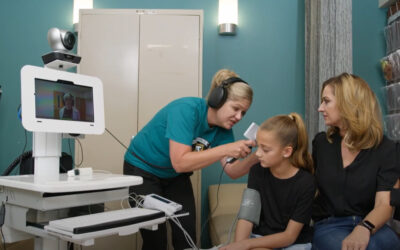But small clinics or other healthcare organizations may hold reservations about the investment involved with adopting a full and robust telemedicine program. In addition to the infrastructure and training involved, the equipment itself presents a significant initial investment. Fortunately, browser-based telemedicine applications can help even smaller healthcare practices keep up to speed with the industry.
 Browser-based technology integrates easily into your existing software suite.
Browser-based technology integrates easily into your existing software suite.
Easier integration
One of the biggest hurdles practitioners may have to overcome early in the telemedicine game is the reluctance of administrators and care providers to learn completely new technologies. Especially in clinics where each practitioner has to keep up with a high demand due to medical deserts or other factors, taking time to install and learn new hardware can pose a significant challenge that many healthcare organizations understandably wouldn’t want to deal with.
To overcome this barrier, some technology companies have focused on Web-based software solutions that don’t require the same hardware investment. For example, Vidyo is a company that has built a browser-based video conferencing suite that is custom designed to integrate into existing workflows and programs.
Lower cost
Of course, it stands to reason that more new hardware equates to higher initial investments. For smaller clinics or those located in rural areas, this can pose a major obstacle. However, software- and Web-based telemedicine solutions can help circumnavigate this difficulty due in large part to the scalability of such sources.
Rather than purchase new equipment on a larger scale, clinics can instead turn to software solutions such as AGNES Interactive, which provides access to all the functions a clinician would need throughout the course of his or her telemedicine exam. For example, many such programs have built-in videoconferencing platforms, requiring the clinic to purchase no additional hardware for their videoconferencing needs over and above a webcam with a resolution that meets the standards set out by the American Telemedicine Association.
“Online solutions don’t impose logistical concerns.”
Portability
Online solutions are attractive because they don’t impose logistical concerns for the remote or consulting provider – they can essentially do their consult from anywhere in the world! While a dedicated telemedicine hardware cart may be essential for some applications, it does tie the remote provider to a specific location where the hardware resides. A Web-based telemedicine platform provides a physician with complete mobility and real-time access to an exam site. The only hardware a physician needs to do a telemedicine consult in these applications is a computer with a webcam and Internet access. So if remote provider portability or mobility are a key requirement for your telemedicine program, make sure you think through your choice of appropriate equipment and hardware.
Find out how AMD’s AGNES Interactive browser-based telemedicine platform works
For more information on custom telemedicine solutions, visit www.amdtelemedicine.com.




